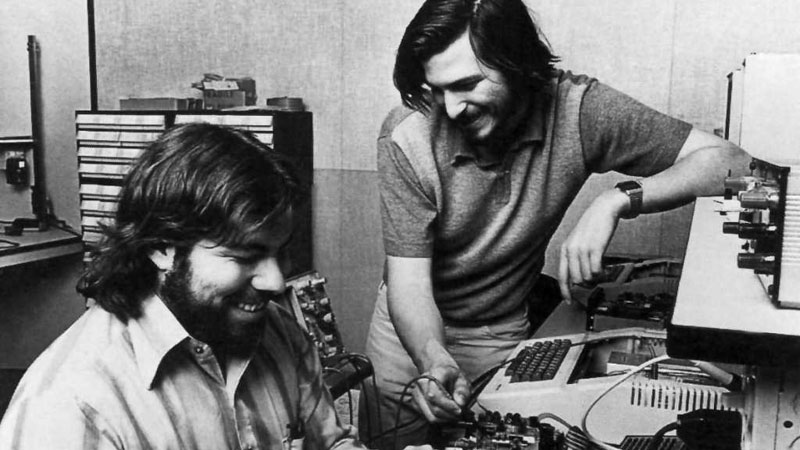
The Evolution of Apple: From Garage Startup to Tech Giant
In the vast world of technology, few companies have captured the imagination and admiration of the masses like Apple Inc. From its humble beginnings in a garage to its status as a global tech giant, Apple’s journey has been nothing short of remarkable. This article delves into the evolution of Apple, tracing its roots back to its founders’ ambitions and exploring the key milestones that shaped the company’s trajectory.
The Genesis of Apple
Apple was founded by Steve Jobs, Steve Wozniak, and Ronald Wayne on April 1, 1976, in a small garage in Los Altos, California. Jobs and Wozniak, both technology enthusiasts, were driven by their passion for computing and a desire to bring technology to the masses. Ronald Wayne, although less known, played an essential role in the company’s early days by providing administrative guidance. The trio had a vision to create user-friendly computers that would revolutionize the industry.
The Apple I and Apple II
Apple’s first product, the Apple I, was a simple computer kit that lacked a keyboard, monitor, or even a casing. Despite its limitations, the Apple I was a modest success, and it laid the groundwork for the more sophisticated Apple II, which followed a year later. Introduced in 1977, the Apple II was the first consumer-ready personal computer with color graphics. Its user-friendly design and intuitive interface made it a commercial hit and cemented Apple’s position as a key player in the emerging personal computing market.
The Macintosh Revolution
As successful as the Apple II was, Apple’s defining moment came with the launch of the Macintosh in 1984. With its groundbreaking graphical user interface and mouse, the Macintosh brought computing out of the realm of tech-savvy enthusiasts and into the hands of everyday users. The iconic “1984” Super Bowl commercial, directed by Ridley Scott, introduced the Macintosh to the world and generated immense anticipation.
The Macintosh’s innovative features and sleek design made it an instant cultural phenomenon, and it propelled Apple’s sales and popularity to new heights. However, internal power struggles and market competition led to Steve Jobs’ departure from Apple in 1985.
The Wilderness Years and Steve Jobs’ Return
In the absence of Steve Jobs, Apple faced a tumultuous period in the late 1980s and early 1990s. The company struggled to innovate and faced increasing competition from rivals like Microsoft. Multiple product launches failed to generate the desired impact, and the company’s financial performance declined.
In 1997, Apple faced a crisis, and its board of directors made a pivotal decision to acquire NeXT, a company founded by none other than Steve Jobs during his time away from Apple. This acquisition brought Steve Jobs back to the company he co-founded, and he assumed the role of interim CEO. Jobs immediately began streamlining Apple’s product line and refocusing the company’s efforts on innovation and design.
The iPod and iTunes: A Digital Revolution
Under Steve Jobs’ visionary leadership, Apple began its transformation from a computer company to a diversified consumer electronics and software giant. In 2001, Apple introduced the iPod, a portable digital music player that revolutionized the way people listened to music. Coupled with the launch of iTunes, a digital media management application, Apple provided a seamless ecosystem for purchasing, storing, and organizing digital music.
The iPod’s success and its association with iTunes played a crucial role in redefining Apple’s image and capturing a broader consumer market. The company’s focus on aesthetics, ease of use, and integration between hardware and software set it apart from its competitors.
The iPhone: Redefining the Smartphone Industry
If the iPod was a turning point for Apple, the iPhone was a seismic shift in the entire tech industry. In 2007, Apple unveiled the first iPhone, combining a mobile phone, an iPod, and an internet communication device into a single revolutionary device. The iPhone’s multi-touch interface and the App Store, which allowed third-party developers to create applications for the device, set new standards for smartphones and mobile computing.
The iPhone’s success was unprecedented, and it propelled Apple to the forefront of the smartphone market. With each successive iPhone iteration, Apple continued to refine its design and features, solidifying its position as a leading innovator in the consumer electronics industry.
The iPad and Beyond
In 2010, Apple introduced another game-changing device: the iPad. The iPad brought tablet computing to the mainstream and created a new product category. Its intuitive interface, coupled with a vast library of apps, made it a versatile tool for work, entertainment, and creativity.
Apple’s product lineup continued to expand with the introduction of the MacBook Air, MacBook Pro, and the Apple Watch, further solidifying its dominance in the tech market. The company also ventured into services with the launch of Apple Music, iCloud, and Apple Pay, creating additional revenue streams and increasing customer loyalty.
The Legacy of Steve Jobs and Tim Cook’s Leadership
Steve Jobs’ untimely death in 2011 was a significant loss for Apple and the tech industry as a whole. His relentless pursuit of excellence, emphasis on design, and ability to envision groundbreaking products shaped Apple’s identity and culture.
Following Jobs’ passing, Tim Cook, Apple’s long-time COO, took the helm as CEO. Under Cook’s leadership, Apple continued to thrive, introducing new products like the iPhone X, Air Pods, and Home Pod. Cook’s emphasis on sustainability and corporate social responsibility also helped elevate Apple’s image as a socially conscious company.
Conclusion
From a humble garage startup to a global tech giant, Apple’s evolution is a testament to the power of innovation, visionary leadership, and a dedication to user experience. Throughout its journey, Apple has consistently pushed the boundaries of technology, redefining industries and reshaping the way we interact with digital devices.
As the company continues to innovate and expand its product and service offerings, the legacy of Apple will undoubtedly endure, leaving a lasting impact on the world of technology and inspiring generations to come.




